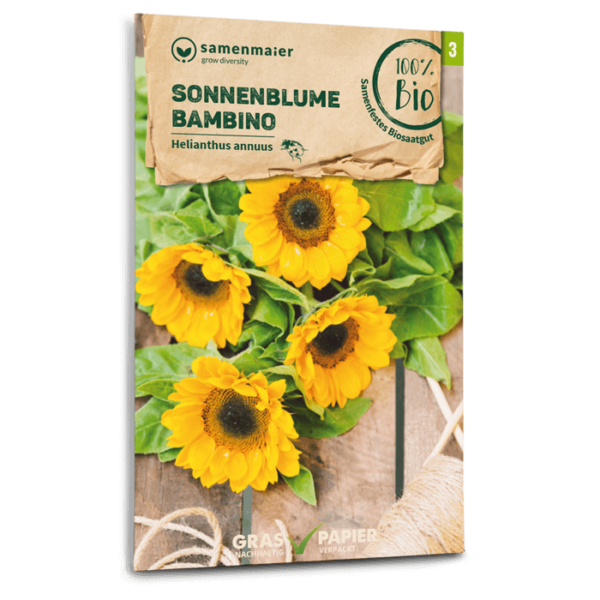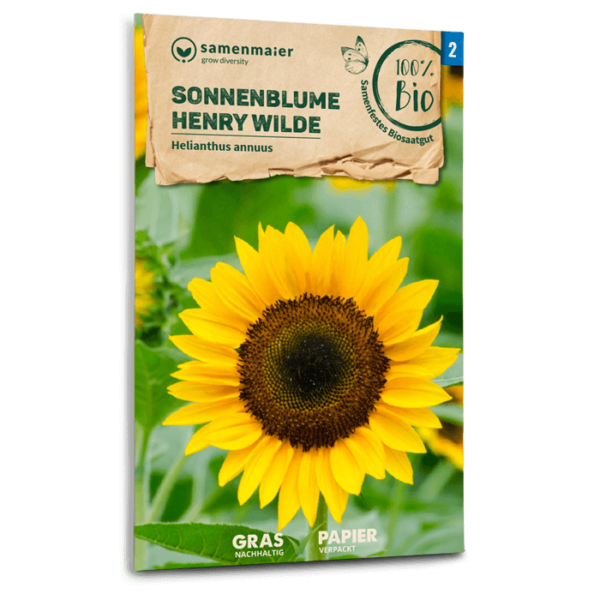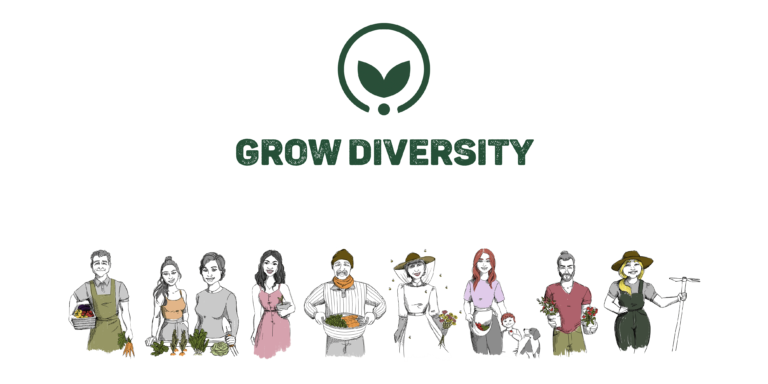Colorful flowers for the farmers’ garden
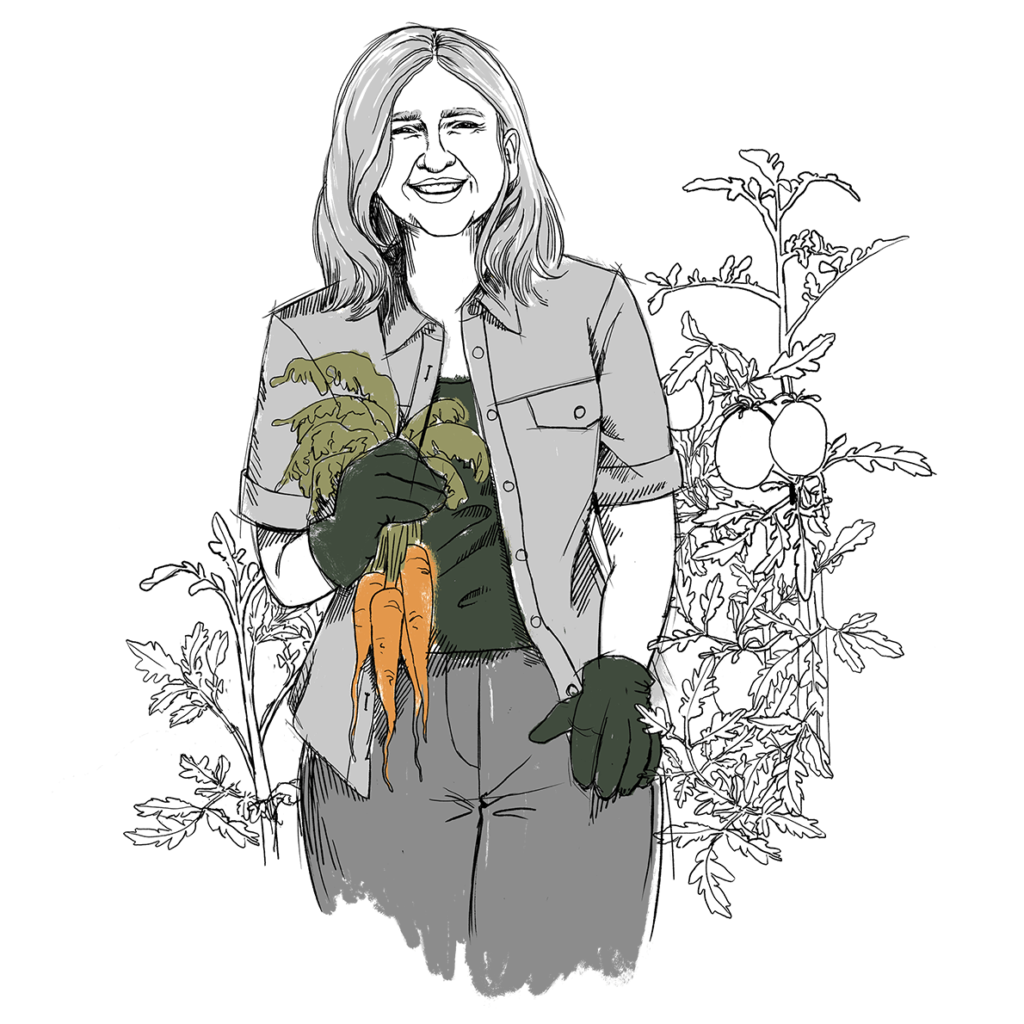
Do you love them too, the idyllic, colorful and lushly blooming farmers’ gardens? Does the sight of them open your heart? There is a good reason for that! According to scientists, colors have a great influence on our emotions: red and yellow shades increase our activity and energy, white ones inspire confidence and green ones have a calming effect. So with the right choice of plants you can create a better mood. But summer flowers can do much more!
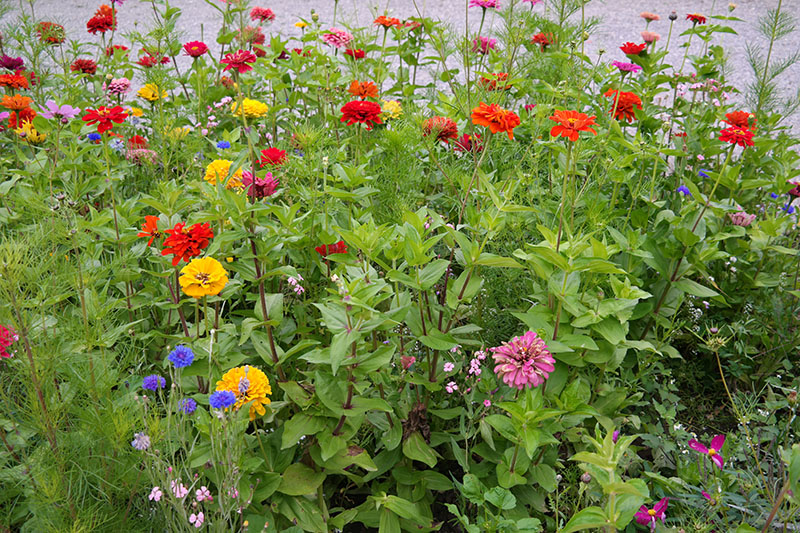
A typical farmers’ garden
A famers’ garden is a square, colorful garden of flowers, vegetables and herbs with a round bed in the middle. It is often surrounded by a low wooden or willow fence, but a low hedge of boxwood, lavender or similar can also serve as a border.
The structure of a famers’ garden is very old – it goes back to monastery gardens – and well thought out. In the center, a round bed is created, which is planted with permanent crops (kitchen herbs, colorful perennials). Around it there are four equal fields, which are intended for the annual vegetable cultivation. One field for heavy eaters (plants with high nutrient requirements), one for medium eaters and one for weak eaters (plants that can cope with low nutrients). The fourth field enjoys a well-deserved break and is best planted with green manure to replenish the bed with nutrients. Year after year, the crops move forward in a circle by one place – this way, the soil is used sustainably and carefully.
Of course, if you want to create a famers’ garden, you don’t have to adhere strictly to these guidelines. Often there is not enough space – just vary with fewer beds.
Everywhere is room for colorful flowers
Famers’ gardens are planted in mixed cultures – but not only vegetables and herbs are mixed – also colorful flowers have their place. In addition to their beauty and the joy they bring to our lives, summer flowers have many other advantages in the vegetable garden.
With their colorful blossoms they attract useful insects. They offer them food and shelter. This promotes biodiversity in the garden. The beneficial insects pay you back by keeping pests at bay and thus protecting your harvest. With colorful flowers you also spoil bumblebees and bees. Once attracted, they will also fertilize your vegetable plants such as tomatoes, peppers or cucumbers. Some flowers even repel pests themselves. French marigolds or marigolds excrete scents that keep harmful soil nematodes away. Pest insects that are specialized on certain plant species and are attracted by their odor (e.g. the cabbage whiting in cabbage plants) are confused by the mixture of scents of the flowers. This makes it much more difficult for them to find their victims (e.g. cabbage or broccoli).
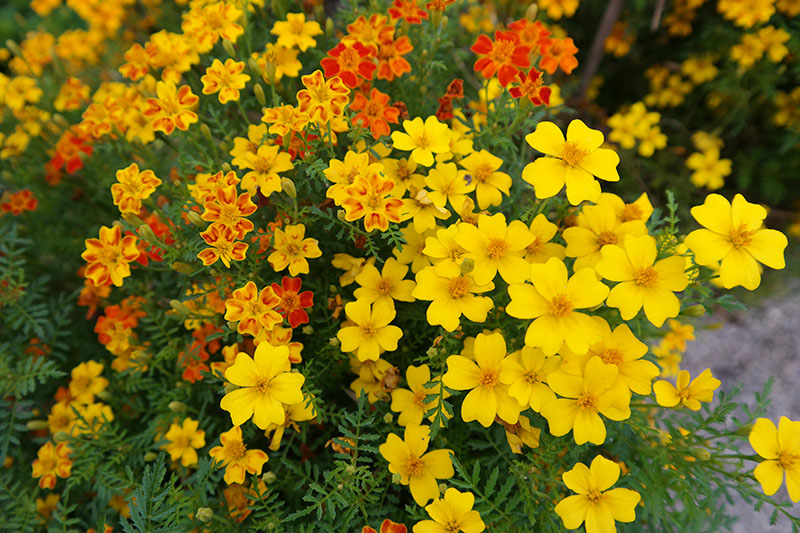
Flowers that should not be absent in any garden
Borage (Borrago officinalis)
Its second name, cucumber herb, reveals much about this annual blue blossoming plant, which grows to a height of about 80 cm. Its edible blossoms and young leaves remind us of the taste of cucumbers. Borage is an ideal spice for pickling – especially natural for cucumbers. You can also use it fresh as an addition to salads or as a garnish for sandwiches.
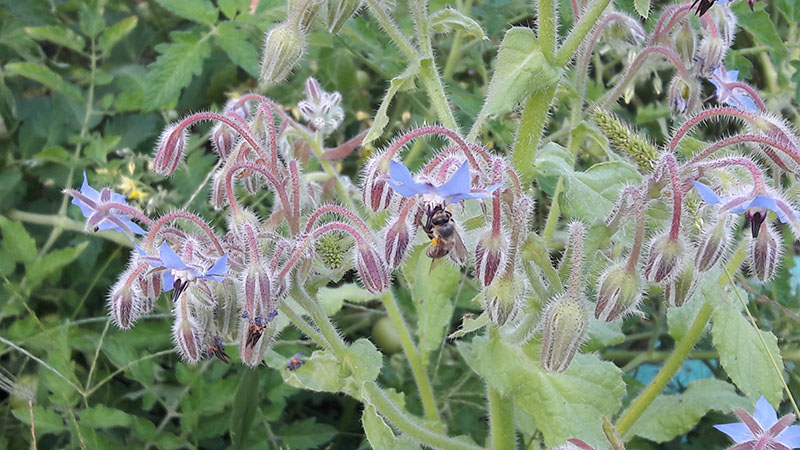
Nasturtium (Tropaeolum majus)
Is a climbing plant with a stem that can reach a length of up to 3 m. If no climbing aid is available, the nasturtium becomes a very pretty ground cover.
Its large, colorful (yellow, orange, red) flowers and leaves are edible. Their spicy, slightly hot taste brings an exciting change to your salad or sandwich.
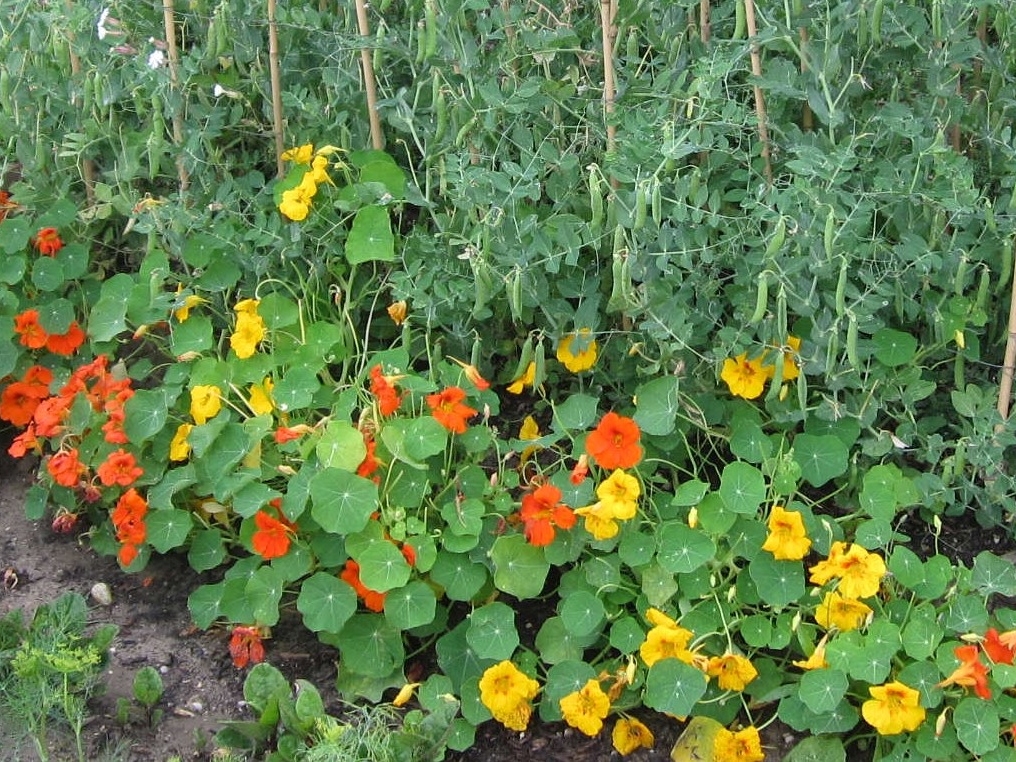
The nasturtium can be planted in a vegetable patch together with, for example, pumpkins, beans, peas, cabbages, tomatoes or peppers. It is very popular with aphids, attracts them and thus reduces the infestation of neighboring plants. You can also use this effect well on fruit trees by planting nasturtium on the tree slices. Apart from aphids, nasturtium also keeps away the whitefly (e.g. in cucumbers). With its colorful flowers it attracts many insects and thus supports the pollination of vegetable plants.
Marigold (Calendula officinalis)
Marigolds are among the green manure plants because they improve the soil. In addition, their roots repel harmful nematodes – as already mentioned above. In a mixed culture, they are considered to be particularly welcome neighbors for tomatoes or potatoes. Because they thrive well in partial shade, they are also ideal for planting under berry bushes. Marigolds are undemanding and seed themselves strongly. Once you have sown them, they will beautify your garden forever. Thanks to the anti-inflammatory substances contained in the petals, marigold is considered a proven medicinal plant.
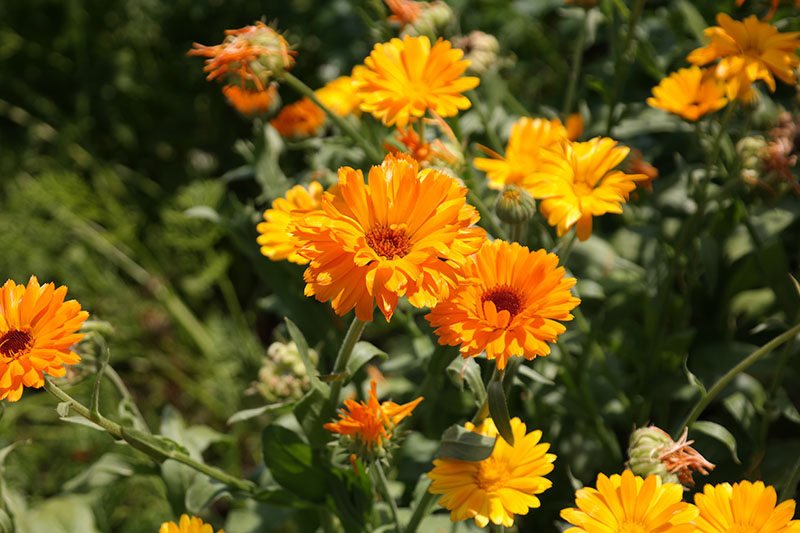
Sunflower (Helianthus annuus)
The sunflower is known for its unmistakable huge, yellow shining petals and above all for its plant movements. It turns its “head” from west to east in the course of the day, so that the flower always looks towards the sun. You can observe these movements, especially in young plants. With age, the stems become stiffer, the flowers heavier and rotate less and less until they remain oriented towards the east.
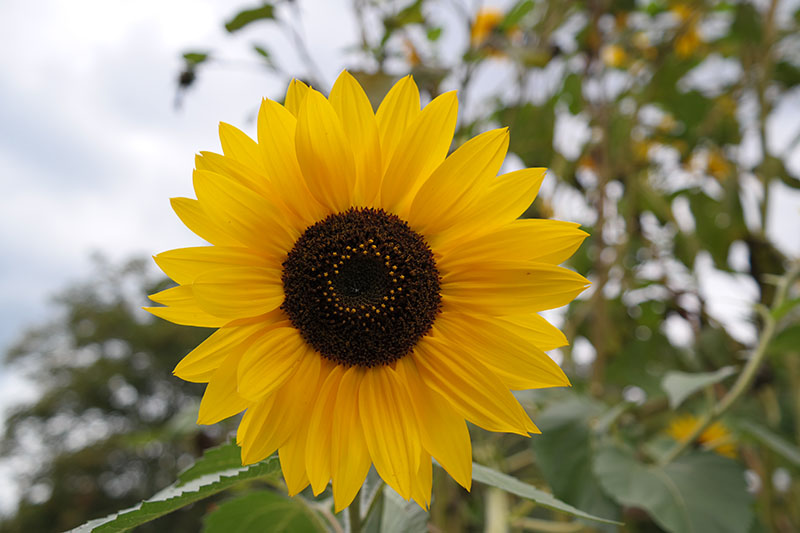
The common sunflower is a member of the composite family and is closely related to the Jerusalem artichoke. There are different sunflower varieties, which differ greatly in height, flower color and branching.
The variety ‘Bambino‘ with a height of only 30 – 40 cm can even be used as a potted plant.
The variety ‘Henry Wilde‘ reaches an impressive height of 2.5 m, it is even suitable as a temporary privacy screen during the summer months.
The seeds of sunflowers ripen starting about mid-September. You can use them as a healthy snack or share them with birds, they enjoy this important food source especially in the winter months.
Wild Mallow (Malva sylvestris)
30 different types belong to the species of mallows. One of the best known representatives is the wild mallow (Malva sylvestris), often also called Great Cheese Poplar. Originating from the Mediterranean region, the wild mallow has also found its place in almost every natural garden. In a sunny location with permeable soil it can grow up to 150 cm high. It delights you from June to September with many edible purple flowers.
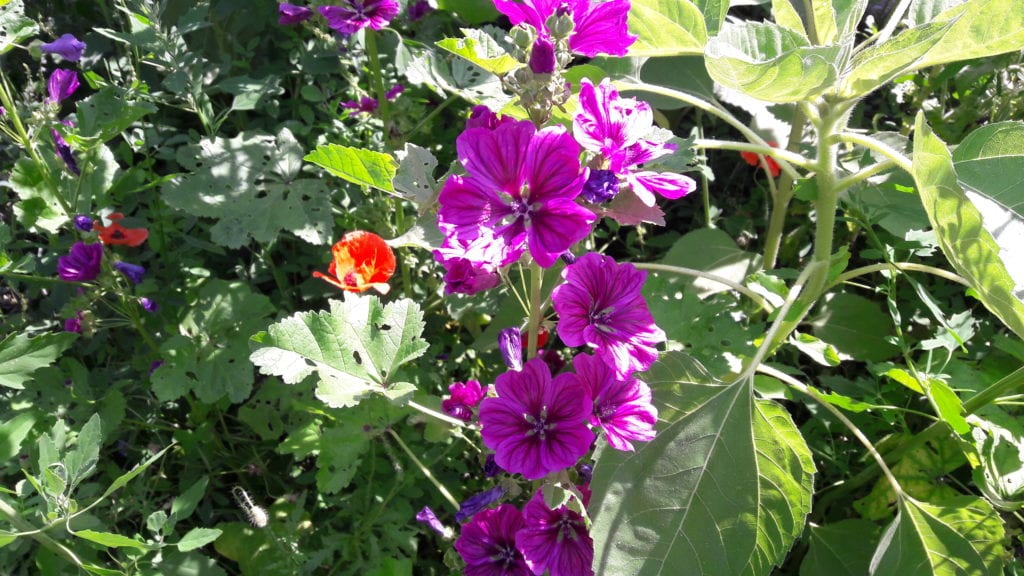
The young leaves are also edible – fresh as an addition to leaf salad or steamed as spinach. You can even eat the green fruits. With their nutty taste they are slightly reminiscent of capers.
The wild mallow has been used and sought after as a medicinal plant for centuries. It contains essential oils, tanning agents, mucilages and flavonoids. A tea made from flowers and leaves has a calming effect on coughs and inflammations of the mucous membranes.
Article: DI Doris Kampas
Photo credits: bio-garten

